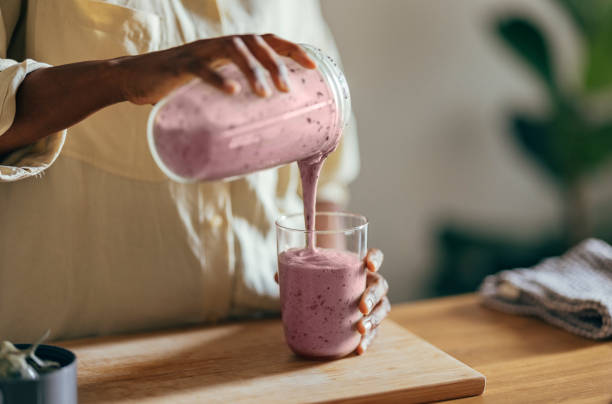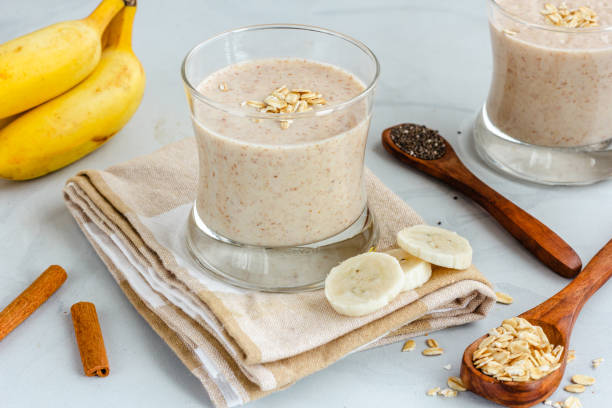The number of calories in a smoothie can vary greatly depending on the ingredients used and the size of the serving. A smoothie made with fruit, vegetables, and a protein source such as Greek yogurt or nut butter can be a healthy and nutrient-dense option, while a smoothie made with high-calorie ingredients such as ice cream, chocolate, and added sugars can be a less healthy choice. In this article, we will explore the factors that affect the calorie content of smoothies and provide some tips for making healthier smoothie choices.
First, let’s define what a smoothie is. A smoothie is a blended, often cold, drink made from a combination of ingredients such as fruit, vegetables, and a liquid base. Smoothies can also include added ingredients such as protein powders, nut butters, and sweeteners. Smoothies are often consumed as a meal replacement or as a healthy snack.
The calorie content of a smoothie is determined by the ingredients used and the serving size. Fruits and vegetables are generally low in calories, with some exceptions such as avocado and coconut. Protein sources such as Greek yogurt and nut butters can also add calories to a smoothie. Sweeteners, such as honey and maple syrup, and high-calorie ingredients like ice cream and chocolate can also contribute to the calorie content of a smoothie.
Calories in Smoothies: Factors that Affect the Number
The number of calories in a smoothie can vary widely, depending on a variety of factors. Here are some of the most important ones:
Ingredients: Different ingredients have different calorie densities. For example, a smoothie made with fruit and vegetables is likely to have fewer calories than one made with nut butter, yogurt, or milk. Additionally, some ingredients, such as avocado or nuts, are higher in calories but also provide healthy fats and other nutrients, so they can still be included in a calorie-conscious smoothie.
Portion size: The size of the smoothie can also affect the number of calories it contains. A larger smoothie will naturally have more calories than a smaller one, even if they have the same ingredients.
Add-ins: Some smoothies may include add-ins such as protein powder, superfoods, or sweeteners, which can increase the calorie content. It’s important to be mindful of these ingredients and choose them wisely.
Preparation method: The way in which a smoothie is prepared can also affect its calorie content. For example, blending the ingredients with ice can make the smoothie thicker and more filling, but it will also increase the calorie content slightly. Using frozen ingredients can also increase the calorie content, as they have more volume and can take up more space in the smoothie.
One cup (240 mL) of unsweetened almond milk, for example, has about 30-50 calories, while one cup (240 mL) of whole milk has about 150 calories. Using a lower calorie liquid base can help to keep the overall calorie content of a smoothie lower.
Here are some examples of the calorie content of common smoothie ingredients:
One banana: 105 calories
One cup (240 mL) of unsweetened almond milk: 30-50 calories
One cup (240 mL) of whole milk: 150 calories
One cup (240 mL) of unsweetened coconut water: 46 calories
One cup (240 mL) of orange juice: 112 calories
One cup (150 grams) of frozen mixed berries: 80 calories
One cup (240 mL) of Greek yogurt: 130 calories
Two tablespoons (32 grams) of peanut butter: 190 calories
As you can see, the calorie content of smoothie ingredients can vary greatly. A smoothie made with a low calorie liquid base, such as unsweetened almond milk or coconut water, and a mix of low calorie fruits and vegetables can be a relatively low calorie option. On the other hand, a smoothie made with a higher calorie liquid base, such as whole milk or orange juice, and added sugars or high calorie ingredients like ice cream and chocolate can be a higher calorie choice.
To make healthier smoothie choices, try using a mix of low calorie and nutrient-dense ingredients such as leafy greens, berries, and protein sources like Greek yogurt or nut butter. Avoid adding added sugars or high calorie ingredients like ice cream and chocolate, and opt for a lower calorie liquid base like unsweetened almond milk or coconut water.
It’s also important to pay attention to serving size when it comes to smoothies. A smoothie that is larger in size will naturally have more calories than a smaller smoothie. When making a smoothie at home, be mindful of the portion sizes of the ingredients you are using and use measuring cups or a kitchen scale to ensure you are using appropriate amounts.

 Home
Home Health
Health Diet & Nutrition
Diet & Nutrition Living Well
Living Well More
More












